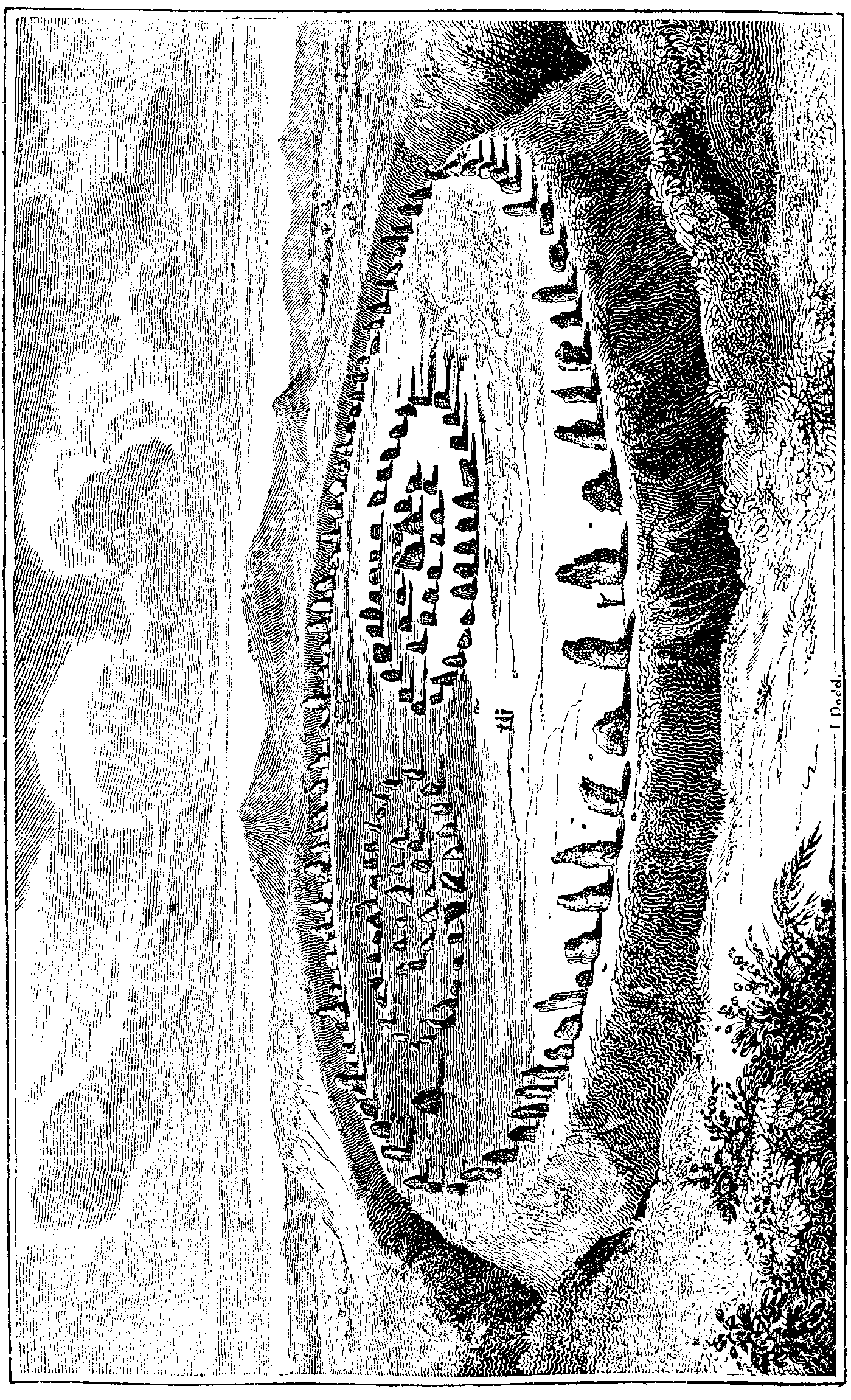THE MIRROR
OF
LITERATURE, AMUSEMENT, AND INSTRUCTION.
| VOL. XII, NO. 341.] | SATURDAY, NOVEMBER 15, 1828. | [PRICE 2d. |
TEMPLE AT ABURY.
Sermons in stones
And good in every thing.—SHAKSPEARE.
What means the mysterious circle of stocks and stones on theother side? Such will be the question of many a lover of fun,novel, fiction, and romance; and though we cannot settle theirorigin with the quickness or the humour of Munden'sCockletop, we will try to let our inquirer into the secretwith the smallest show of mysticism possible.
Our engraving represents the Temple of Abury, the most extensiveof all the ruins in Wiltshire, attributed to the Druids. Such wasits original state, before the Vandalism of modern times destroyedand levelled much of its monumental grandeur. It consisted of agrand circle, containing two minor circles. The outer circlecontained upwards of 28 acres, and was surrounded by a ditch. Therewas a circle within each of the two circles, contained within thecircumvallation; and according to Dr. Stukely, the antiquarian, theoriginal was thus composed:—
Outward circle, within the vallum 100 stonesNorthern Temple, outward circle 30 —Ditto, inward circle 12 —Cove, or cell 3 —Southern Temple, outward circle 30 —Ditto, inward circle 12 —Central Obelisk 1 —Ring Stone 1 —
The Temple occupied a spot to which there is a gradual andimperceptible ascent on all sides, and was approached by twoavenues of two hundred stones each. Its general form was that of asnake, in by gone ages, the symbol of eternity and omniscience. "Tomake the form still more elegant and picture-like, the head of thesnake is carried up the southern promontory of HackpenHill—and the very name of the hill is derived from thiscircumstance."1
The whole figure thus represented the circle, snake, and wings.By this the founders meant to picture out the nature of theDivinity; the circle meant the supreme fountain of all being, theFather; the serpent, that divine emanation from him, which wascalled the Son; the wings imported that other divine emanation fromthem, which was called the Spirit, the Anima Mundi. That theTemple was of a religious, and not of a warlike nature, isproved by its ditch being withinside the agger of earth, contraryto the mode adopted in works of defence.
Of the devastation and decay of Abury, the following data willafford some idea:
The grand total of stones, included in the temples and avenues,was 650; in the original temples, 188.
In Aubrey's time, A.D. 1663 73 stonesIn Dr. Stukeley's time, A.D. 1722 29 —In 1815 17 —
Of very late years, says Sir Richard Colt Hoare, I do notimagine the dilapidations o
